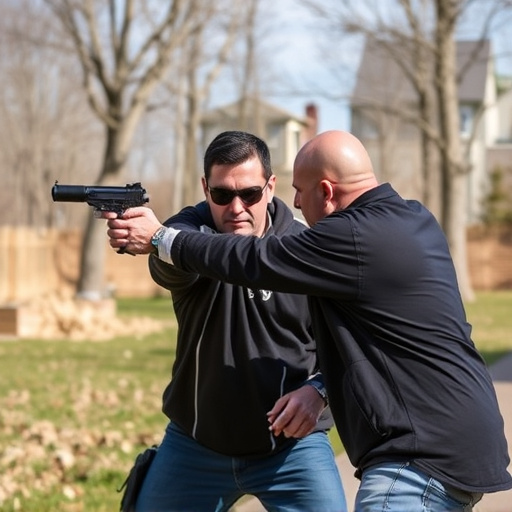Disguised stun guns, acting as non-lethal electric discharge weapons (EDWs), offer personal defense by temporarily incapacitating attackers through muscle contractions and balance loss. Their effectiveness depends on power output, device size, target's build, placement of probes, environmental conditions, and local laws regulating their use. Choosing the right stun gun involves balancing voltage, weight, ease of use, and legal considerations to ensure a reliable self-defense tool for various settings. Disguised stun guns, often integrated into everyday items like flashlights or keychains, provide peace of mind without drawing unwanted attention.
“Uncover the power of disguised stun guns as effective self-defense tools. This comprehensive guide explores the science behind muscle incapacitation, delving into how these compact devices disrupt an assailant’s mobility. We’ll examine the factors influencing stun gun effectiveness, including body type and environmental conditions. Additionally, we’ll navigate legal considerations and empower readers to make informed choices when selecting a stun gun for personal safety. Prepare to discover the reality of stun guns as a vital option in today’s self-defense arsenal.”
- Understanding Stun Guns and Their Effects on Muscles
- Factors Influencing Muscle Incapacitation Time
- Legal Considerations and Self-Defense Rights
- Choosing the Right Stun Gun for Effective Protection
Understanding Stun Guns and Their Effects on Muscles
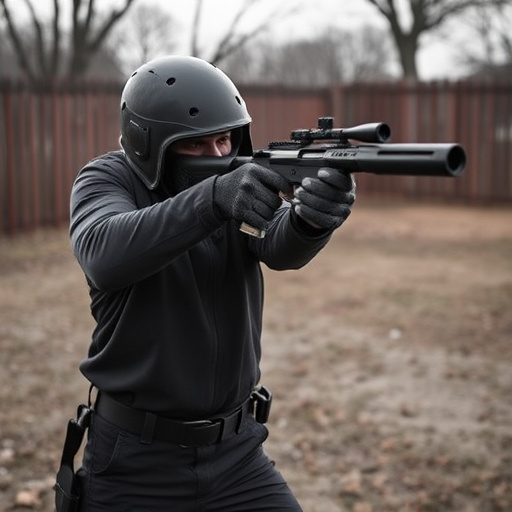
Stun guns, also known as electric discharge weapons (EDW), are non-lethal self-defense tools designed to incapacitate an attacker temporarily. These devices emit a powerful electrical pulse that disrupts the nervous system, causing muscle contractions and loss of balance in the target. Understanding how stun guns affect muscles is crucial for anyone considering them as personal defense mechanisms.
When a disguised stun gun, often integrated into self-defense tools, is activated, it delivers an electric current through metal probes or contacts on the device. This current interferes with the electrical signals between the brain and muscles, leading to muscle twitching, weakness, and eventually complete incapacitation. The duration of this incapacitation varies depending on factors such as the stun gun’s power output, the target’s body size and resistance, and the specific electrical current used. Effective self-defense strategies involve learning proper usage techniques and understanding the weapon’s range and impact to ensure maximum safety during unexpected encounters.
Factors Influencing Muscle Incapacitation Time
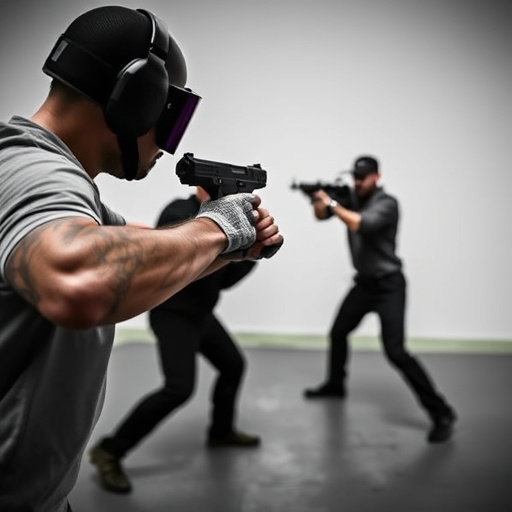
The duration of muscle incapacitation caused by a stun gun can vary significantly based on several factors. One key factor is the power output of the device, with higher voltage delivering more intense shocks that can lead to longer durations of immobilization. Another influencing element is the size and weight of the stun gun; smaller, concealed devices designed for self-defense, like disguised stun guns, may not deliver as powerful a shock compared to larger models. The target’s physical build also plays a role; individuals with higher muscle mass might experience shorter incapacitation times due to their body’s better ability to conduct electricity.
Additionally, the placement of the stun gun on the body can significantly impact effectiveness. For instance, striking sensitive areas like the groin or sides can cause more intense shocks, potentially extending the duration of muscle incapacity. Environmental conditions, such as temperature and humidity, can also subtly affect the device’s performance, with hotter or moist environments potentially impacting the stun gun’s charge retention and delivery.
Legal Considerations and Self-Defense Rights
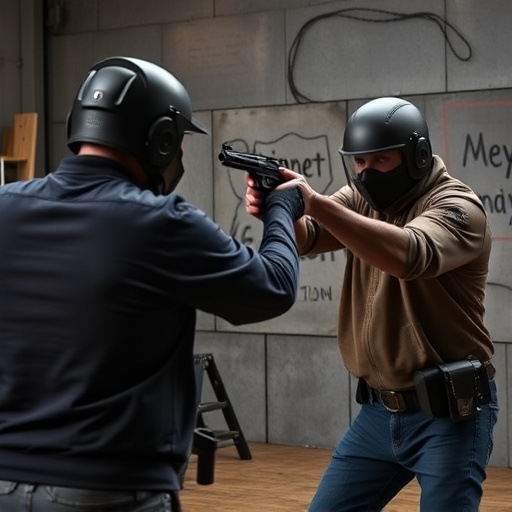
When considering the use of a stun gun for self-defense, it’s crucial to be aware of the legal implications and your rights in different jurisdictions. The legality of concealed carry and stun guns varies significantly from region to region. In many areas, these devices are classified as firearms and subject to similar regulations, including permit requirements and restrictions on where and how they can be carried.
Disguised stun guns, often integrated into everyday items like flashlights or keys, offer a level of discretion for individuals seeking self-defense options. However, it’s essential to understand that even these disguised tools are not without legal boundaries. The duration and extent of muscle incapacitation allowed by a stun gun is also governed by local laws, which can range from short-term discomfort to more prolonged paralysis, depending on the specific regulations in your area. Knowing and adhering to these legal considerations are paramount for ensuring your rights as a responsible citizen while exploring self-defense options with stun guns.
Choosing the Right Stun Gun for Effective Protection
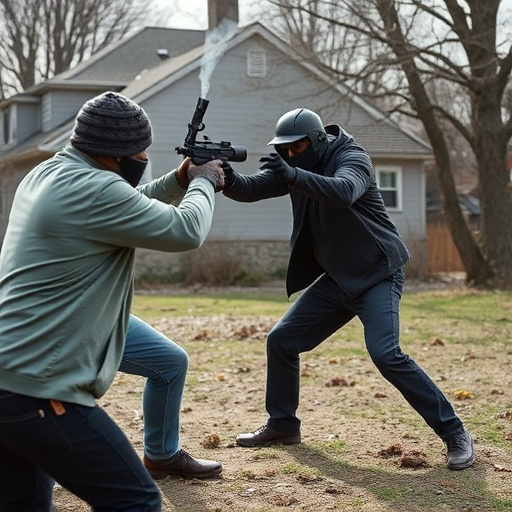
Choosing the right stun gun is paramount for effective self-defense. It should be discreetly designed, often referred to as a disguised stun gun, allowing you to carry it conveniently while ensuring maximum impact during an encounter. These self-defense tools are becoming increasingly popular due to their non-lethal nature and ability to incapacitate an attacker temporarily. When selecting a stun gun, consider factors like voltage output, weight, and ease of use. A higher voltage is generally more effective at causing muscle incapacitation, but it’s also important to balance this with the weapon’s overall usability.
Disguised stun guns are particularly appealing as they can look like everyday objects like flashlights or keychains, making them easy to carry without drawing unwanted attention. This discretion is valuable in various settings, from personal safety at home or on the street to professional security roles where a visible weapon might be inappropriate. The right stun gun provides peace of mind, knowing you have a reliable tool for self-defense readily available when needed.
Stun guns, as powerful self-defense tools that can provide a critical window of protection time, have varying muscle incapacitation durations influenced by several factors. Understanding these variables and selecting the right concealed stun gun suitable for personal needs is essential in ensuring effectiveness and safety. In today’s world where self-defense awareness is paramount, having a disguised stun gun can offer individuals an extra layer of security. By considering legal aspects and choosing the appropriate device, one can navigate potential threats with enhanced confidence and peace of mind.
